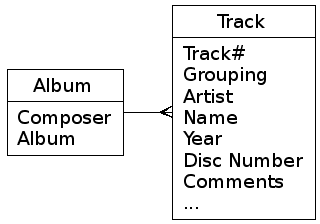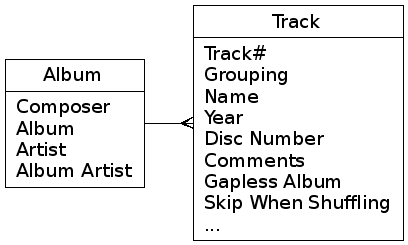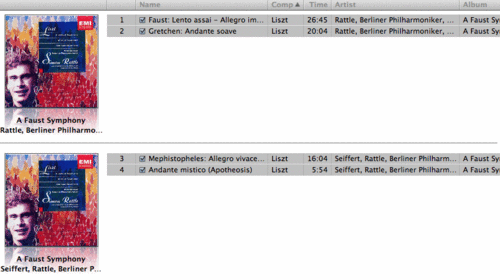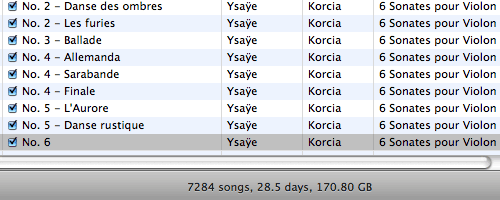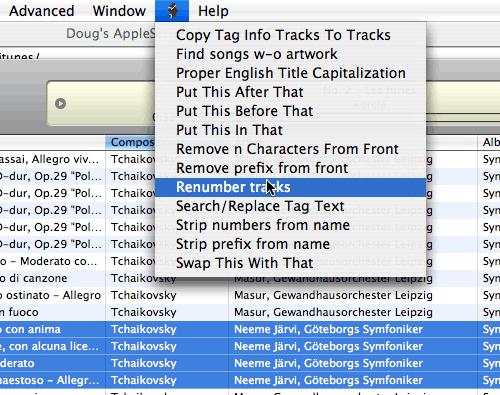Ever since my Panasonic PVR died and I switched to an Elgato EyeTV 250 for my PVR needs, I hardly ever use my 32″ Sharp Aquos LCD HDTV, and do most of my watching on my Mac’s 23″ Cinema HD display.
To rectify this, I purchased an AppleTV yesterday at the San Francisco Apple Store, where they are prominently displayed, hooked up to Sony Bravia LCD TVs. While their choice of TV is questionable (remember, Sony is a four-letter word), the demo is effective for those who did not get to see it at MacWorld Expo 2007.
In all likelihood, I will cancel my Comcast cable subscription in a few days. The only TV shows I watch are:
- Battlestar Galactica (iTunes season pass: $34.99)
- South Park (iTunes season pass: $23.99)
- The Simpsons (not available on iTunes yet)
- Family Guy (although the show has become stale and probably on its way out)
I stopped watching live TV seven years ago when I bought my first PVR (a TiVo Series 1). My monthly Comcast bill is $56.20 (basic extended analog cable, no premium channels). Purchasing an iTunes season pass for Galactica and South Park would cost me just slightly more than one month of Comcast’s “service”. This also means the AppleTV will have paid for itself in less than 6 months (the famous “return on investment” or ROI metric used by IT departments to estimate whether a project is worthwhile or not). The Fox shows I can get over ATSC HDTV because I have an Elgato EyeTV 500 ATSC DTV/HDTV to Firewire tuner (broadcast flag free), and direct line of sight to Sutro Tower, where the San Francisco digital TV over-the-air signals are beamed from.
Of course, the satisfaction of firing the cable company, with its tendency to jack prices up much faster than inflation for ever degrading service, is in itself priceless. As a bonus, the iTunes shows are fully digital, and without ads.
The limiting factor is of course the abysmally slow standard of what passes for broadband in the US. Ironically, I left Europe for California in 2000 because I thought the epicenter of the Internet industry was here, but nowadays the US lags badly behind even formerly dirigiste France in terms of optical broadband and high speed DSL.
Broadband prices are much higher in the US — I pay $70 per month for 2.5 Mbps downstream and 384 kbps upstream, when in France I would get 18 Mbps for half that price (or 70 Mbps for the same price as in the US in the many areas that are getting optical coverage). This is despite the fact my former colleagues at France Telecom face labor costs and Internet transit costs double those of US carriers (the US’ central role in terms of connectivity means US carriers can impose peering terms where non-US carriers pay the lion’s share of the transoceanic cable costs, even now that Euro or Asian Internet traffic is beginning to eclipse US traffic). The reason for high prices is of course the coddling of the AT&T-Verizon-Comcast oligopoly by a FCC overly influenced by the doctrinaire Chicago School of economics, which refuses to accept even the theoretical possibility of a monopoly…
AppleTV is the second key product in Apple’s digital hub strategy, and like the iPod, it is also available to Windows users. Apple did learn from its mistakes in the 1980s, where it lost potential dominance of the desktop PC market to Microsoft by having unrealistically maximalist designs on the market. In some way, this is akin to the virtualization phenomenon shaking corporate IT: like the browser or Parallels, iTunes is another middleware layer that makes the operating system almost irrelevant – Windows users can switch painlessly to the Macintosh, once they realize the elegance and simplicity of the iPod and AppleTV also apply to the Mac and they do not have to settle for the inferior Windows experience.
Now, AppleTV is a semi-closed environment like the iPod. I refuse on principle to buy low-quality, DRM-infested music tracks from the iTunes store. Switching to DRM-infested video tracks from the Apple store is not very consistent. For my defense, I must say:
- Unlike music, video is something you see once and usually never again. Thus, the DRM restrictions are less onerous (still outrageous, but less unacceptably so).
- There is no legal non-DRM alternative, unlike CDs for music.
- Cable companies are really, really evil…
Last but not least, just as you can load your iPod with high-quality, non-DRM music ripped from good old CDs and SACDs, you can load video into iTunes from various sources other than Apple, such as the excellent Elgato EyeTV PVR software, a DVD ripper like Handbrake, podcasts and probably all sorts of other mechanisms in the future (I would be surprised if YouTube did not come out with an AppleTV compatible service soon). Since Apple refuses to license its DRM, that effectively forces other players to use non-DRM video. Who said two wrongs do not make one right?
In any case, I fully expect the AppleTV to be reverse-engineered and alternative operating systems made available for it, just as Rockbox provides FLAC support and gapless playback on the iPod, or how people managed to get Linux running on the original Xbox. Apple is probably not subsidizing the AppleTV the way Microsoft does with its game consoles, so they probably do not have a strong incentive to prevent repurposing with mechanisms like the encrypted boot loader on the Xbox. Less than a week after initial availability, there are already reports of people upgrading the internal hard drive…
Flat-panel HDTVs were the star of the 2006 holiday shopping season, thanks in no small part to free-falling prices. There is now a critical mass of people in the US who are starting to realize just how lousy standard definition TV is, like my friend and colleague Frank who can’t bear to watch his TiVo Series 1 any more now that he has a humongous rear-projection 1080p screen, and is mulling building his own MythTV or Freevo box.
The iPod is already a mass-market phenomenon. I believe Apple has a real shot of taking a huge chunk of the cable companies’ business away from them. Hollywood will be cheering, because Steve Jobs is one of them, and they can make much more profit from iTunes Store sales than from the crumbs the cable distribution monopolies grant them. Of course, there will be collateral damage like TiVo (not that I would particularly mind), and possibly NetFlix. Presumably Microsoft will do the same by adding equivalent functionality to the Xbox 360. Sony will try, but will fail utterly because of its insistence on polluting everything with proprietary yet unusable pseudo-standards and unredeemably horrid software. All in all, the television industry is in for some mighty interesting times.
Update (2007-03-24 10AM):
I have just cancelled my Comcast subscription. The guy handling the cancellation was actually very friendly, and we talked a little about South Park, TiVo, digital TVs and DVR options. They did not put any hurdles or unnecessary hoops to jump through in the cancellation process, you have to grant them that. Contrast this with scumbags like AOL who have been repeatedly slammed by state attorney-generals for fraudulently keeping on charging users after cancellation. The cable company’s pricing policies may be evil, but their customer service seems pretty good.
